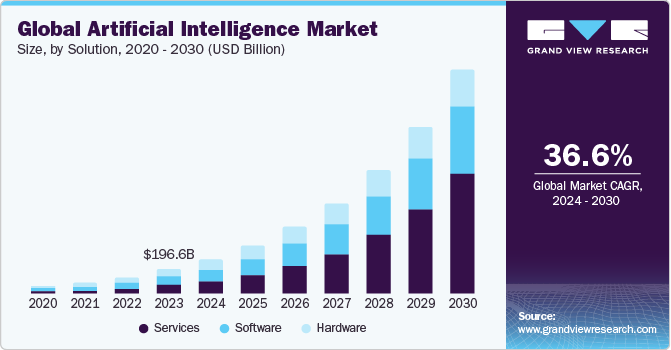Nvidia has nothing to fear but a lack of fear — TradingView News
Almost $300 billion worth of Nvidia got vaporized on Tuesday. It was the third sell-off in the $2.6 trillion U.S. chipmaker’s shares this year, and like the previous two, it has little basis in industrial reality. The chances are that market volatility and changeable economic data will continue to buffet Nvidia’s stock, but the biggest risk to its valuation could come later, and come from within.

Nvidia's Position in AI Development
Nvidia is one of the biggest beneficiaries of the race to develop artificial intelligence, as its semiconductors and networking equipment are deployed in data centers used to train and run AI systems. Revenue is expected to double this year to around $125 billion, according to analyst estimates gathered by LSEG. The outlook there hasn’t changed. Giant customers still plan to spend billions on its chips. Meta Platforms, for example, intends to roughly increase its overall capital expenditure this year by around 50%, to $40 billion.

There can still be room for disappointment. The large internet and software firms that form part of its customer base may fail to monetize their AI initiatives enough to justify their $300 billion investment. At Meta, Mark Zuckerberg’s plans for open AI may turn it into a commodity. But there too, nothing has changed.
Potential Threats to Nvidia
Nvidia has newer threats: the U.S. Department of Justice has accelerated a probe into whether the company unfairly gave preferential pricing and chips to companies that exclusively use Nvidia and shun its rivals, according to Bloomberg. Rival chipmaker Intel settled with U.S. regulators over similar issues over a decade ago. But such levies are rarely very damaging. Europe slapped a fine on Intel 15 years ago, yet that case is still ongoing.
If there’s something that should worry investors, it lurks further out – and Intel offers some foreshadowing. That former giant was once the chipmaker to beat. Its peak market capitalization in 2000 of roughly $500 billion is equivalent to nearly $1 trillion in today’s money. But Intel lost its manufacturing edge to specialized manufacturer TSMC and missed out on the shift to chips that power cellphones. Its U.S. settlement played a role, making it easier for upstarts like Nvidia. But that was at root a problem of complacency. Intel stuck to what it knew, longer than it should have.
That kind of risk is hard to price in to a company’s shares, which probably means most investors aren’t pricing it in at all. Andy Grove, Intel’s chief executive just prior to the company’s zenith, said that “only the paranoid survive”. Intel didn’t take him at his word, but Nvidia boss Jensen Huang still can.

Top website in the world when it comes to all things investing. Mobile reviews with 4.9 average rating. No other fintech apps are more loved. Custom scripts and ideas shared by our users.




















